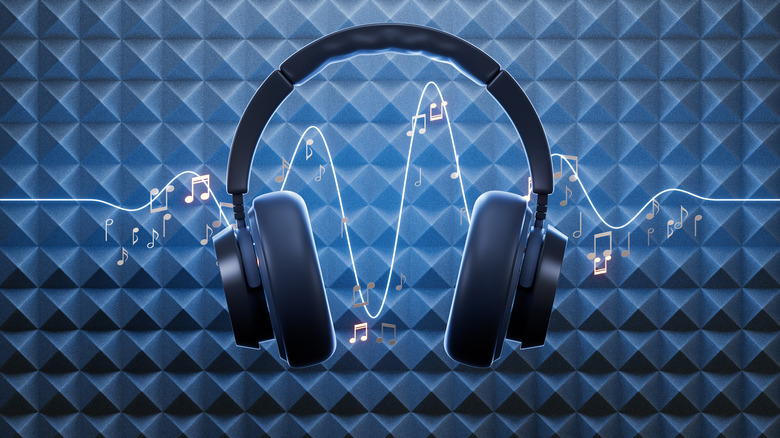ANC Vs ENC Noise Cancellation: The Pros & Cons Of Each, Explained
Active noise cancellation (ANC) represents the noise-blocking technology which most consumers recognize as the primary noise reduction feature in headphones and earbuds. The system uses microphones to detect ambient sounds which it then counteracts with sound waves of an inverse frequency to eliminate background noise. The process of destructive interference acts as a sound reduction method which blocks your perception of outside noises. ANC technology can achieve noise reduction of 20-30 decibels below the original level depending on the quality of its implementation.
ANC technology comes in different types. Feedforward ANC uses external microphones to pick up noise outside the headphones. Feedback ANC uses internal microphones inside the ear cup, measuring what the listener actually hears. Hybrid ANC combines both methods for a broader range of cancellation, but it also requires more microphones and processing power, which adds to cost.
The technology provides optimal performance against low and mid-frequency noise sources which include airplane engine hums, traffic sounds, and office background noise. The system does not remove all background noises, but it does an excellent job of reducing constant sounds.
Environmental noise cancelling (ENC) is a related technology, but ultimately concerned with a different side of the modern headphone experience.
How does ENC work?
ENC functions to enhance the quality of your voice when speaking during phone calls. ENC headphones or earbuds use multiple microphones to distinguish between your voice and background noise, then apply digital signal processing to filter out everything except your speech. Advanced algorithms identify which part of the signal is voice and which is noise, then suppress the unwanted parts in real time. The result is that the person on the other end hears your words without the distractions of traffic or office chatter.
Unlike ANC, ENC doesn't change how much outside noise you hear. Instead, it improves how you sound to others. This makes it especially useful for phone calls or video conferences. Many ENC headphones focus less on music playback and more on communication, where clear voice transmission is critical.
ENC performance depends on the quality and number of microphones as well as the sophistication of the processing algorithms. Devices with two or more microphones per earbud typically perform better at isolating the voice.
The pros and cons of ANC technology
The biggest strength of ANC is its ability to create a quieter listening environment. ANC technology functions to eliminate background sounds which enables you to listen to music or podcasts without any disturbances, and it can let you listen at lower volumes in noisy environments, which can help protect hearing. According to research cited by the CDC, millions of workers are exposed to harmful noise each year, with a significant percentage developing hearing difficulty or tinnitus.
However, ANC has limitations. The technology works best against consistent, low-frequency sounds. Irregular noises, such as music playing in the background or conversations nearby, are much harder to cancel. Headphones with ANC often rely on passive isolation to help block those sounds, but complete silence isn't possible. And yes, not all noise-cancelling headphones include ANC. There's a difference between the two.
Another drawback is cost. ANC requires additional microphones, processors, and higher-quality hardware, which makes headphones more expensive. Constantly sampling ambient sound and producing anti-noise signals also consumes more power. Users may need to recharge their headphones more frequently than non-ANC models.
There are also occasional side effects. Some people report mild discomfort, dizziness, or pressure in the ears when using strong ANC systems. While not harmful, this can be distracting during long listening sessions.
The pros and cons of ENC technology
ENC is specifically designed to make a user's voice stand out in noisy environments, ensuring the other party on a call hears only what's important. This is especially helpful in busy streets or homes with background activity.
Real-time filtering also means users don't have to raise their voices to be understood. The system isolates speech and suppresses distractions automatically, whether it's traffic outside or a dog barking. For gamers and remote workers, this leads to smoother conversations without constant repetition.
This technology is not a substitute for ANC. Since its purpose is improving your microphone clarity, it doesn't have anything to do with your headphone output. If you're in a noisy environment, you'll still hear all of it, only the person on the other end of the call benefits. That means ENC will not help with music playback or video watching in loud surroundings.
ENC performance can vary widely depending on hardware. Budget models may not have enough microphones or advanced algorithms to filter noise effectively. Low-quality ENC can even distort speech or fail to cancel strong background sounds, leaving only minimal improvement.
Now that you know a bit about this technology, I hope it puts some myths in your mind about it to rest.



